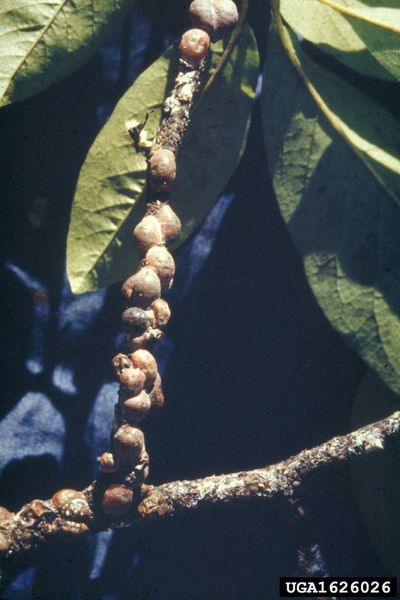Read on for more information about the causes and cures for blackened magnolia leaves.
Black Leaves on Magnolia
Some magnolia trees and shrubs are evergreen, though many are deciduous. Deciduous trees flower before leafing (creating an extra impressive show), but both types of magnolia plants are known for their attractive green leaves. When you see those magnolia leaves turning black, you know that your plant is experiencing some problem. While any of a number of issues can cause black leaves, the most likely cause is a soft-bodied insect called magnolia scale.
Wasps on Black Magnolia Leaves
Magnolia scale look like little immobile lumps on the twigs and surfaces of the magnolia leaves. These insect pests only move when they are first born, but rapidly mature and stop moving. You might not even notice magnolia scales unless the population explodes. Magnolia scale have mouthparts like aphids, which they use to pierce into the plant. They suck out the nutrients and, later, excrete a sweet, sticky fluid called honeydew. The honeydew is not actually what causes the black leaves. The dark color is a black sooty mold fungus that grows on the honeydew. Wasps love honeydew and are also attracted to the leaves, so if your magnolia is attracting wasps, that confirms the scale diagnosis.
Honeydew Damage
Neither the honeydew nor the wasps on magnolia leaves are harmful for the plant. However, sooty mold reduces photosynthesis. This means that a scale-infested magnolia will lack vigor and may suffer from stunted growth and even branch dieback. When you see magnolia leaves turning black, you’ll need to take action to get rid of the scale. If the pest is only on a few branches, use a sharp pruner and trim out the infected areas. Sterilize the pruner between cuts to prevent the fungus from spreading. Otherwise, use a pesticide that is labelled for use on magnolia scale. Ideally, you should wait to spray until late summer or fall when the new scale babies have arrived. As prevention, apply a dormant horticultural oil spray before bud break in springtime.
